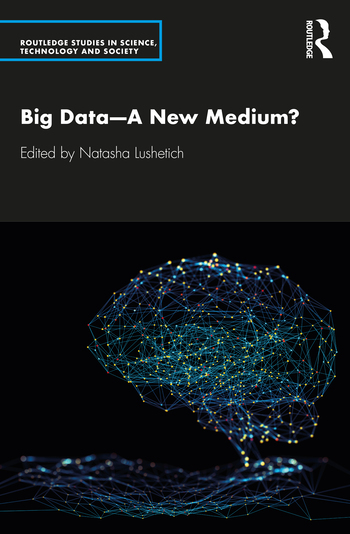Book chapter in Big Data. A New Medium?, Routledge
June 24, 2020

Co-authored with Jussi Parikka, our chapter ‘“Visual Hallucination of Probable Events”: On Environments of Images, Data, and Machine Learning’ will be part of this forthcoming book, edited by Natasha Lushetich.
Book Description
Drawing on a range of methods from across science and technology studies, digital humanities and digital arts, this book presents a comprehensive view of the big data phenomenon.
Big data architectures are increasingly transforming political questions into technical management by determining classificatory systems in the social, educational, and healthcare realms. Data, and their multiple arborisations, have become new epistemic landscapes. They have also become new existential terrains. The fundamental question is: can big data be seen as a new medium in the way photography or film were when they first appeared? No new medium is ever truly new. It’s always remediation of older media. What is new is the medium’s re-articulation of the difference between here and there, before and after, yours and mine, knowable and unknowable, possible and impossible.
This transdisciplinary volume, incorporating cultural and media theory, art, philosophy, history, and political philosophy is a key resource for readers interested in digital humanities, cultural, and media studies.
Table of Contents
Prologue: Why Ask the Question?, Natasha Lushetich
Section I: Patterning Knowledge and Time
-
Big Data and/versus People Knowledge: On the Ambiguities of Humanistic Research, Ingrid Hoofd
-
Simulated Replicants Forever? Big Data, Engendered Determinism and the end of Prophecy, Franco ‘Bifo’ Berardi
-
“Visual Hallucination of Probable Events”: On Environments of Images, Data, and Machine Learning, Abelardo Gil-Fournier and Jussi Parikka
Section II: Patterning Use and Extraction
-
Biometric Datafication in Governmental and Personal Spheres, Btihaj Ajana
-
Digital Biopolitics and the Problem of Fatigue in Platform Capitalism, Tim Christaens
-
Appreciating Machine-Generated Artwork through Deep Learning Mechanisms, Lonce Wyse
Section III: Patterning Cultural Heritage and Memory
-
Data to the Nth Degree: Zooming in On The Smart Set, Craig J. Saper
-
Intellectual Autonomy After Artificial Intelligence: The Future of Memory Institutions and Historical Research, Nicola Horsley
-
BeHere: Prosthetic Memory in the Age of Digital Frottage, Natasha Lushetich and Masaki Fujihata
Section IV: Patterning People
-
Surfaces and Depths: An Aesthetics of Big Data, Dominic Smith
-
POV Data Doubles, the Dividual and the Drive to Visibility, Mitra Azar
-
Reading Big Data as the Heterogenous Subject, Simon Biggs
-
Epilogue: Telepathic Exaptation in Late Cognitive Capitalism: A Speculative Approach to the effects of Digitality, Warren Neidich